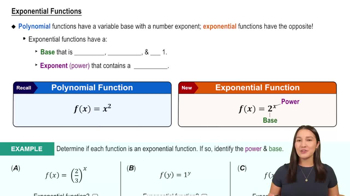Theory and Examples
The variables r and s are inversely proportional, and r = 6 when s = 4. Determine s when r = 10.
 Verified step by step guidance
Verified step by step guidance Verified video answer for a similar problem:
Verified video answer for a similar problem:



 5:57m
5:57mMaster Graphs of Common Functions with a bite sized video explanation from Patrick
Start learning